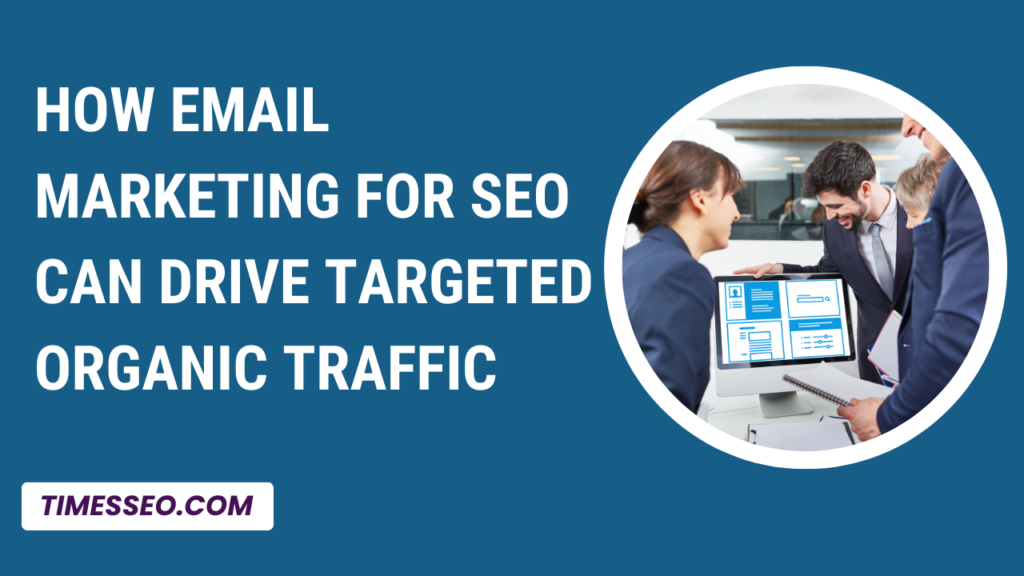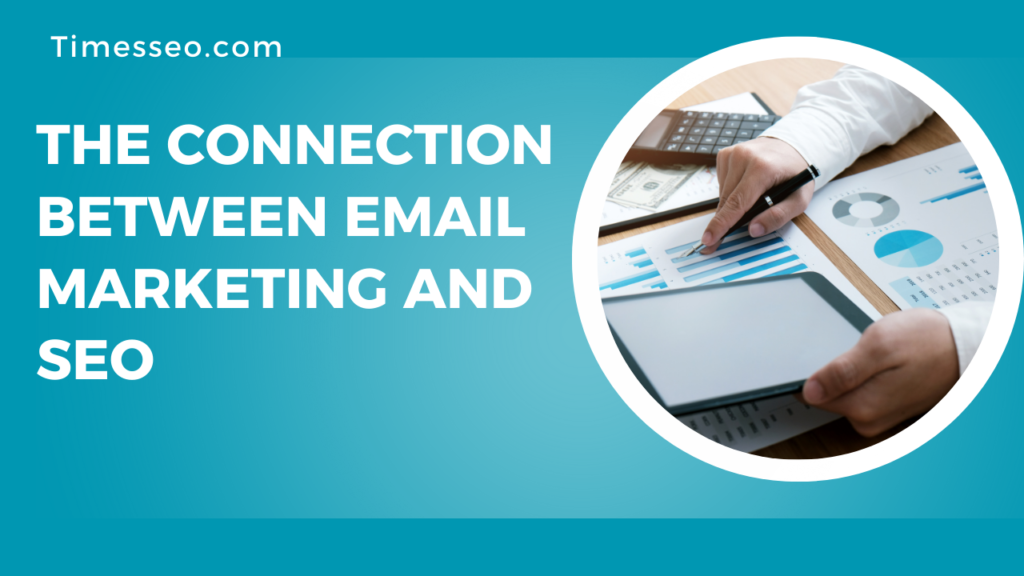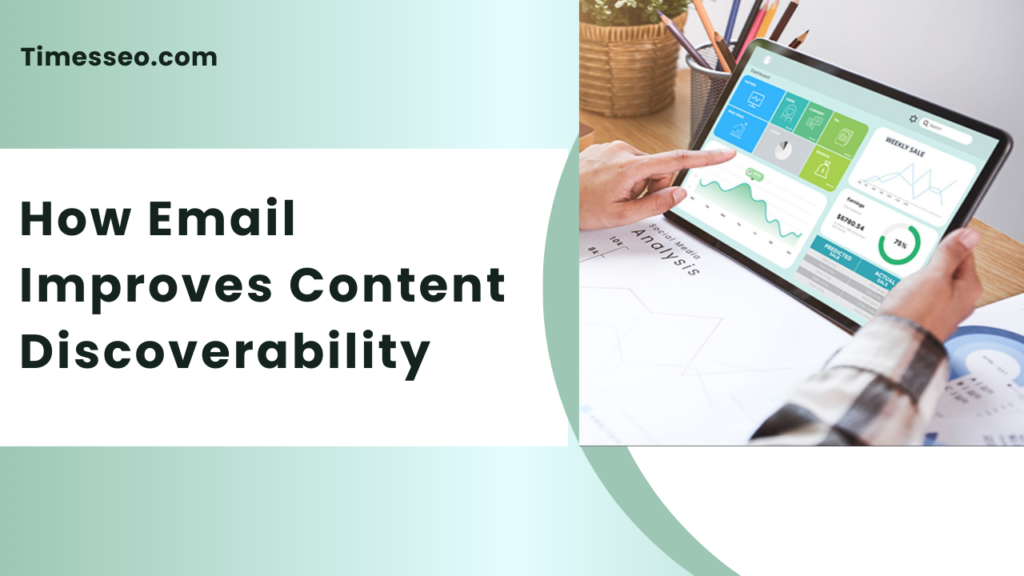
How Email Marketing for SEO Can Drive Targeted Organic Traffic
Discover how email marketing for SEO can drive targeted organic traffic to your website. Learn practical strategies to boost engagement, improve search rankings, and turn your email campaigns into a powerful SEO tool.
Table of Contents
Introduction
Ever wondered why your SEO efforts sometimes don’t bring the expected traffic? The answer might not be in your keywords but in your strategy. A potent cycle is created when email marketing is used in conjunction with SEO: email brings visitors to your website, and SEO makes sure that traffic increases naturally. Think of email marketing as the spark and SEO as the engine—they work best together.
What is Email Marketing for SEO?
Email marketing for SEO is simply using your email campaigns to drive organic, targeted traffic that benefits your site’s search rankings. Instead of seeing them as two separate strategies, smart marketers integrate them to maximize reach and visibility.
The Connection Between Email Marketing and SEO
About the Email Marketing and SEO: What is it?
At first glance, SEO focuses on search engines while email marketing deals with inboxes. But here’s the kicker: Google values user engagement signals like click-through rates, bounce rates, and dwell time. Emails that drive quality traffic to your website can strengthen these signals and ultimately boost rankings.
How Email Marketing Boosts Organic Traffic
- Driving Repeat Visitors – Sending newsletters and updates keeps users coming back. Search engines love sites with consistent traffic.
- Reducing Bounce Rates – When subscribers click through, they’re already interested, which means they’re less likely to leave immediately.
- Building Authority – Readers often share valuable content they discover through emails, creating new backlink opportunities.
Crafting SEO-Friendly Email Campaigns
- Optimizing Subject Lines – Just like meta titles, subject lines decide whether someone clicks or ignores.
- Using Keywords – Sprinkle target keywords naturally into your email copy to align with your SEO focus.
- Adding CTAs – A clear call-to-action that directs readers to your website ensures higher traffic flow.
Personalization and Segmentation in Email Marketing
One-size-fits-all emails don’t cut it anymore. By segmenting your audience—say, based on location, interest, or past behavior—you create emails that resonate. Personalized content means more clicks, more engagement, and ultimately better SEO performance.
Creating Share-Worthy Content
If your email content excites readers, they’ll share it on social media or link to it from blogs. Your domain authority is increased by this indirect link construction. Think of your emails as conversation starters that expand your reach beyond inboxes.
Boosting On-Site Metrics With Email Marketing
When subscribers land on your site, they tend to stick around longer because they trust you. This helps with:
- Lowering Bounce Rates
- Increasing Dwell Time
- Improving Engagement Metrics
Search engines take into account all of these nuanced ranking signals.
How Email Improves Content Discoverability
Launching a new blog post or guide? Email is your distribution channel. Early traffic from loyal subscribers gives search engines the hint that your content is valuable, helping it rank faster.
Building Authority and Trust Through Email
Trust is everything online. With consistent, value-driven emails, you nurture relationships with your audience. Loyal readers often become brand advocates, recommending your content and linking back to it.
Email Marketing and Link Building
Email is also your best tool for outreach. Whether you’re pitching guest posts or promoting your latest guide, emails help you build connections that lead to backlinks—an SEO goldmine.
Best Practices for Email Campaigns That Help SEO
- Be Consistent – Send emails regularly but avoid spamming.
- Mobile Optimization – With most users opening emails on phones, mobile-friendly design is non-negotiable.
- Frequency should be balanced such that too few emails are ignored and too many irritate.
Common Mistakes to Avoid
- Spammy Practices – Misleading subject lines damage trust.
- Ignoring Analytics – Without tracking, you can’t improve.
- Overloading Subscribers – Flooding inboxes reduces engagement and increases unsubscribes.
Tools to Use for Email Marketing and SEO
- Email Platforms – Mailchimp, ConvertKit, ActiveCampaign.
- SEO Tools – SEMrush, Ahrefs, and Google Analytics for campaign impact tracking.
Future of Email Marketing for SEO
Expect AI-driven personalization, predictive targeting, and smart content suggestions. The future will see email marketing becoming even more aligned with SEO goals, making campaigns smarter and more impactful.
Conclusion
When used together, email marketing and SEO are like fuel and fire—they amplify each other’s strengths. Email ensures your content reaches the right audience, while SEO helps that content attract new visitors. If you want more targeted organic traffic, it’s time to stop thinking of them as separate strategies and start using them as one.
Frequently Asked Questions
Not directly, but it boosts engagement metrics that search engines consider.
Consistency is key—once a week or bi-weekly works well for most businesses.
Yes, they can encourage shares and even attract backlinks from interested readers.
Absolutely. Personalized emails improve click-throughs, which translates to more site visits.
Ignoring analytics—without tracking, you won’t know what’s working or what needs improvement.
Table of Contents
Popular Posts
-
 Affordable Technical SEO Audit for Small Business: A Complete Guide26 Jun 2025 Blog
Affordable Technical SEO Audit for Small Business: A Complete Guide26 Jun 2025 Blog -
 How to Get an Affordable Technical SEO Audit for Small Business27 Jun 2025 Blog
How to Get an Affordable Technical SEO Audit for Small Business27 Jun 2025 Blog -
 The Ultimate Local SEO Audit Checklist for Startups28 Jun 2025 Blog
The Ultimate Local SEO Audit Checklist for Startups28 Jun 2025 Blog -
 Local SEO Audit Checklist for Startups: A Beginner’s Guide28 Jun 2025 Blog
Local SEO Audit Checklist for Startups: A Beginner’s Guide28 Jun 2025 Blog -
 Top On-Page SEO Audit Steps for Service Websites Every Business Should Know29 Jun 2025 Blog
Top On-Page SEO Audit Steps for Service Websites Every Business Should Know29 Jun 2025 Blog -
 Technical SEO for WordPress: The Ultimate Beginner’s Guide01 Jul 2025 Blog
Technical SEO for WordPress: The Ultimate Beginner’s Guide01 Jul 2025 Blog -
 The Impact of On-Page SEO Audit Steps for Service Websites on UX01 Jul 2025 Blog
The Impact of On-Page SEO Audit Steps for Service Websites on UX01 Jul 2025 Blog -
 Technical Mobile SEO Audit Tips for Developers02 Jul 2025 Blog
Technical Mobile SEO Audit Tips for Developers02 Jul 2025 Blog -
 Complete SEO Backlink Audit Guide for Better Google Rankings03 Jul 2025 Blog
Complete SEO Backlink Audit Guide for Better Google Rankings03 Jul 2025 Blog -
 Boost Your Rankings with Technical SEO for WordPress01 Jul 2025 Blog
Boost Your Rankings with Technical SEO for WordPress01 Jul 2025 Blog






